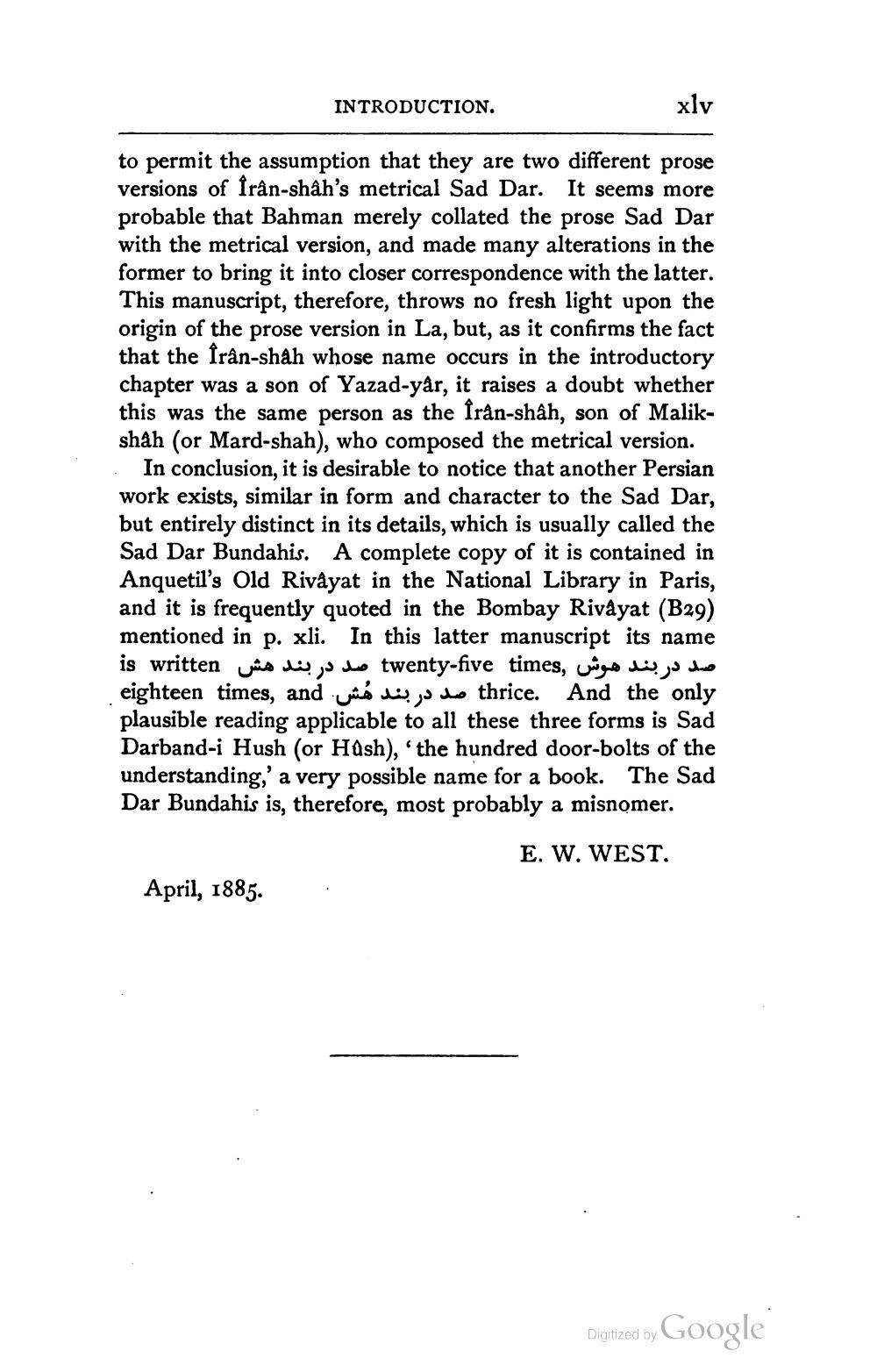________________
INTRODUCTION.
xlv
to permit the assumption that they are two different prose versions of frân-shâh's metrical Sad Dar. It seems more probable that Bahman merely collated the prose Sad Dar with the metrical version, and made many alterations in the former to bring it into closer correspondence with the latter. This manuscript, therefore, throws no fresh light upon the origin of the prose version in La, but, as it confirms the fact that the frân-shah whose name occurs in the introductory chapter was a son of Yazad-yâr, it raises a doubt whether this was the same person as the frân-shầh, son of Malikshah (or Mard-shah), who composed the metrical version.
In conclusion, it is desirable to notice that another Persian work exists, similar in form and character to the Sad Dar, but entirely distinct in its details, which is usually called the Sad Dar Bundahis. A complete copy of it is contained in Anquetil's Old Rivåyat in the National Library in Paris, and it is frequently quoted in the Bombay Rivayat (B29) mentioned in p. xli. In this latter manuscript its name
twenty-five times صد در بند هش is written صد در بند هوش ,
eighteen times, and we su to thrice. And the only plausible reading applicable to all these three forms is Sad Darband-i Hush (or Hash), the hundred door-bolts of the understanding,' a very possible name for a book. The Sad Dar Bundahis is, therefore, most probably a misnomer.
E. W. WEST.
April, 1885.
.
Digitized by Google




